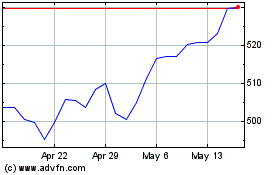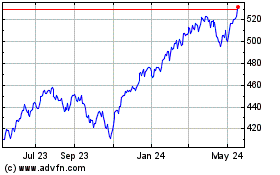Will the S&P 500 Gain Pace in the Final Week of September?
September 29 2023 - 5:22AM
Finscreener.org
As September nears its end,
stocks are witnessing a downward trend. All three major indices are
staring at losses as we enter the last week of the month. The Dow
Jones Industrial Average index has fallen by 2.2%, the S&P
500 has declined by 4.2%, and the Nasdaq Composite has seen a 5.9%
reduction in September.
Let’s see what will impact the
equity markets in the upcoming week.
The U.S. government shutdown
This week, the potential
government shutdown in Washington remains a significant concern for
markets. The week commences with Congress uncertain about
finalizing a spending bill before the Saturday deadline, raising
concerns over a potential halt in government operations.
A prolonged shutdown might result
in temporary layoffs, affected benefits, or a possible slowdown in
economic growth. The House, led by Republicans, did not proceed
with a funding scheme before taking a weekend
break.
This was due to Speaker Kevin
McCarthyU+02019s inability to gain the support of conservative
members demanding significant expenditure reductions. "ItU+02019s
hard to predict whatU+02019s next," said Senate Majority Whip Dick
Durbin, D-Ill., during his appearance on CNN’s “State of the Union”
this past Sunday.
Is the Hollywood writerU+02019s strike about to
end?
After an extended strike lasting
almost 150 days, Hollywood writers and producers have inked a
preliminary labor deal. While specifics of the agreement, achieved
after two days of weekend negotiations, remain undisclosed, it
still requires ratification by the Writers Guild of America
members.
The union informed its members
that the deal covers “significant advancements and safeguards for
writers across all sectors.” As the entertainment industry evolves,
screenwriters have advocated for a larger share of streaming
profits and protections against artificial intelligenceU+02019s
impact.
The strike, coupled with an
actorsU+02019 strike that began in July, has caused disruptions in
TV and film schedules across prominent media firms.
Amazon enters the AI race
Amazon (NASDAQ:
AMZN) is going all-in on
artificial intelligence development. The e-commerce giant has
committed to a $4 billion investment in AI firm Anthropic, known
for its chatbots that compete with OpenAI’s
ChatGPT.
This collaboration will establish
Amazon Web Services (AWS) as AnthropicU+02019s chief cloud service
provider and offer enhanced features to AWS users via Anthropic.
With this move, Amazon aims to delve deeper into AI innovation,
striving to stay competitive against industry giants like Microsoft
and Alphabet.
Credit card losses in
focus
Goldman Sachs (NYSE:
GS) reports a surge in
credit card company
losses, noting levels unseen since the 2008 financial crisis. From
a low in September 2021, the current loss rate of 3.63% has
escalated by 1.5 percentage points. Goldman anticipates these
losses to increase even more, potentially nearing 5%. This forecast
emerges as the U.S. credit card debt surpasses the $1 trillion
mark.
Home price index and more
On Tuesday, the Case-Shiller
National Home Price Index and FHFA’s House Price Index for July
will be released. According to Case-ShillerU+02019s projections,
there was a 0.7% increase in July, marking six consecutive months
of positive growth after significant drops in the latter part of
2022. Annually, prices are anticipated to decrease by 1%, marking
the fifth straight month of year-over-year reductions.
Rising mortgage rates, driven by
the Fed’s interest rate increases, have peaked in more than 20
years, making homeownership unaffordable for many potential buyers.
Coupled with a scarce housing inventory, the housing market is
currently the least affordable in nearly four decades.
Approximately 80% of U.S. residents believe itU+02019s not the
right time to purchase a home.
The Bureau of Economic Analysis
(BEA) is set to release the Personal Consumption Expenditures (PCE)
Price Index for August on Friday. The index is the Federal
ReserveU+02019s favored measure of inflation. Prices in August are
expected to have gone up by 0.5%, a growth from JulyU+02019s 0.2%
increment.
Annually, a 3.5% rise is
predicted, a speed-up from July’s 3.2%. Excluding the fluctuating
food and energy costs, the core prices probably increased by 0.2%
month-to-month and 3.9% year-to-year.
The Fed prefers the PCE Price
Index over the Consumer Price Index (CPI) because it better
reflects the actual spending patterns of consumers. The Fed aims to
maintain a 2% annual PCE inflation rate, aligning with its dual
objectives of stable prices and maximum employment.
SPDR S&P 500 (AMEX:SPY)
Historical Stock Chart
From Jan 2025 to Feb 2025

SPDR S&P 500 (AMEX:SPY)
Historical Stock Chart
From Feb 2024 to Feb 2025
